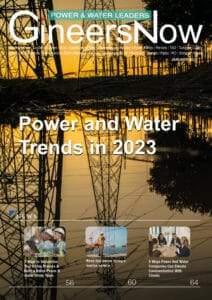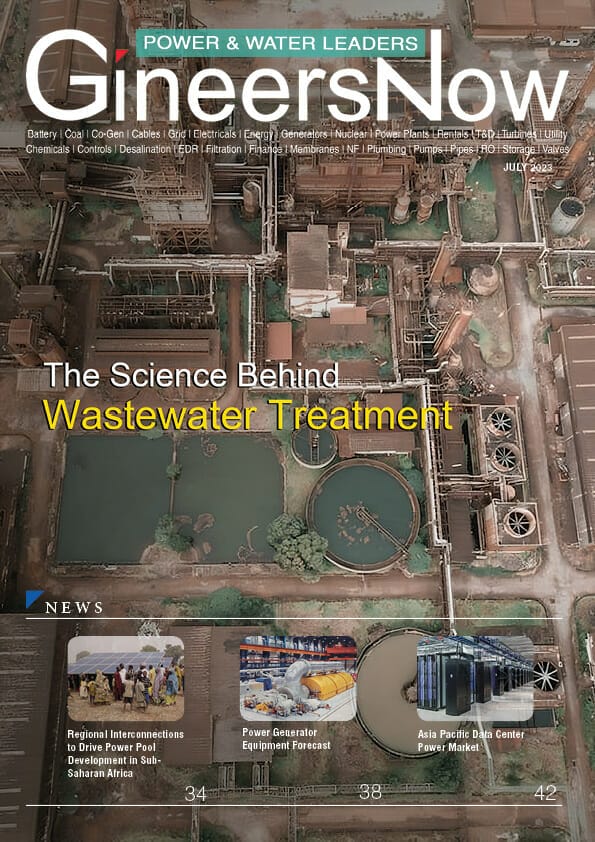Power and water are essential resources for life, so it is important to keep track of their trends. In 2023, people will be increasingly dependent on these resources as the population continues to rise and technology becomes more advanced. As a result, understanding the current power and water trends in 2023 is important to make informed decisions about managing these resources in the future.
Electric Power Trends in 2023
As the world moves further into the future, electric power trends are changing rapidly. In 2023, these trends are expected to continue to evolve and become more efficient.
One of the main changes we can expect in 2023 is an increased focus on sustainability and renewable energy sources. Wind and solar energy are expected to be more widely used as they continue to become more cost-effective. Additionally, hydroelectricity is expected to be utilized more due to its ability to generate clean electricity without emitting greenhouse gases. This could lead to an overall reduction in carbon emissions from electric power sources over the next few years.
Along with these changes, there is also an increased emphasis on water conservation throughout 2023.
Advances in Storage Technology
The world of energy is rapidly evolving, and the landscape of power and water trends in 2023 promises to be markedly different than it was just a few years ago. In particular, advances in storage technology will have enormous implications for both energy producers and consumers alike.
Electric power storage technologies have made huge leaps forward in recent years, with improvements ranging from increased efficiency to lower costs. In 2023, this trend will continue as new research leads to even more efficient batteries and other storage devices that can save energy for use at a later time. This could allow homeowners to store excess electricity generated during times when demand is low and then draw on that stored electricity during peak periods when demand is highest. Additionally, using stored electricity instead of additional generation during peak hours can result in significant cost savings for utilities and improved grid stability due to a reduced reliance on large power plants.
Renewable Energy Sources
In 2023, electric power trends are shifting from fossil fuels to renewable energy sources. The public demand for clean energy sources drives the market for solar, wind, and water-based power sources. Power grids worldwide are now becoming more interconnected to take advantage of regional resources like hydroelectric dams and geothermal vents. At the same time, there has been a renewed focus on harnessing natural resources to provide reliable power.
Water is becoming increasingly important as an energy source in 2023. Wave farms and tidal turbines in coastal regions are being tapped for electricity production. At the same time, micro-hydro projects along rivers have become popular ways to generate electricity at a local level. Innovative solutions such as desalination plants that turn salt water into drinking water also produce usable energy in the process.
Smart Grid Development
Electric Power Trends in 2023: Smart Grid Development is a look at the power and water trends expected to shape the future. In 2023, electricity grids are set to become smarter, more efficient, and more sustainable than ever before. The shift towards smart grid technology will benefit users, including improved security against cyber threats and an easier way to access clean energy sources such as solar and wind. Additionally, these new grids will reduce costs by allowing customers to take advantage of the real-time pricing information their utility companies provide.
The development of smart grids is also expected to play a key role in stabilizing water supplies across the globe. By using data from sensors installed on water pipelines, utilities can effectively manage resources by predicting when demand will peak or fall short.
Impact of EVs on Electrical Systems
The world of energy is rapidly changing, and 2023 looks to be a major turning point for the electric power and water industries. By 2023, the impact of electric vehicles (EVs) on electrical systems will become increasingly evident as more consumers adopt this technology.
Electric vehicle technology has been steadily improving over the past few decades, becoming more efficient and cost-effective each year. As such, 2023 is expected to show a marked increase in EV sales worldwide; many analysts predict that they will outsell gas-powered cars by this time. This shift towards EVs will drastically affect the current electrical system infrastructure due to the increased demand for electricity that they require. As a result, utilities may need to reexamine their plans for providing reliable power while also addressing any potential water shortages that might occur with an increase in EV ownership.
Challenges Ahead
The year 2023 is quickly approaching, and with it come numerous environmental challenges regarding electricity and water use. Global populations are growing, so more demand for power and water resources is expected over the next few years. As we move into the future, a few trends will shape how electricity and water are used in 2023.
First off, renewable energy sources such as solar, wind, and hydropower will become increasingly important as global efforts to reduce carbon emissions continue to accelerate. This will put pressure on governments worldwide to invest in renewable energy infrastructure that can meet surging demand levels while reducing emissions from traditional sources of power. Additionally, rising sea levels due to climate change will likely lead to an increased focus on coastal cities’ ability to manage their water resources alongside electric power needs sustainably.
Future of Electric Power
Electric power is a crucial resource for the global population, and its trends are constantly changing. By 2023, many experts anticipate major developments in electrical power production and consumption due to new technologies, environmental concerns, and advances in renewable energy sources.
In terms of electrical power production, one major trend will be an increase in energy generated by wind turbines and solar panels. With advancements in electricity storage systems like batteries, more households will also be able to depend on renewable energy sources such as solar and wind without relying on traditional non-renewable sources like coal or gas. Additionally, research into nuclear fission technology is expected to progress significantly over the next five years, which could boost nuclear-based electricity generation.
Water Trends in 2023
In 2023, the world is projected to experience dramatic water consumption and usage shifts. From increased hydropower generation to a greater reliance on desalination, power and water trends are set to transform significantly over the next four years.
The intensification of global climate change is impacting rainfall patterns and creating increasingly dry environments. As a result, many parts of the world are turning towards renewable energy sources, such as hydropower, to meet their rising electricity needs. Hydropower is expected to increase by 6% between now and 2023, making it one of the fastest-growing forms of energy production.
As water scarcity continues to plague large areas of the planet, more countries are turning towards desalination plants as an alternative source of clean drinking water. A report from the International Desalination Association predicts that global desalination capacity will grow by eight over the next decade and will reach 9.7 billion m3/day.
Global Climate Change
Water Trends in 2023: Global climate change will significantly affect power and water trends for the year 2023. Though the exact ramifications are difficult to predict, it’s certain that the environment is changing quickly, and this will affect our access to water and energy sources. This article will explore the potential implications of climate change in relation to the availability of both clean water and sustainable energy.
Carbon emissions are causing rapid changes in global temperatures, resulting in shifting weather patterns worldwide. In turn, this could cause severe droughts or floods in certain regions – leading to serious drinking water shortages. In addition, extreme weather conditions can disrupt electricity production and damage critical infrastructures such as dams or power grids. As a result, there may be decreased access to reliable sources of electricity by 2023 due to unpredictable natural disasters caused by climate change.
Drought and Water Scarcity
Water trends in 2023 are projected to be greatly impacted by drought and water scarcity. Power and water are more connected than ever, as climate change has caused a reduction of these vital resources. According to the National Resources Defense Council, droughts across the United States have led to power shortages and will continue for years into the future. This lack of power and water will cause major disruptions to businesses, individuals, and governments across America in 2023.
Water scarcity is an issue that has been present for decades but is expected to worsen substantially in only a few short years due to climate change-related increases in temperature and decreased rainfall. With increased temperatures comes increased demand for electricity due to air conditioning needs; this need puts immense strain on already limited energy sources such as hydropower, which depends on rivers and streams with less runoff due to the drought cycle.
Desalination Plants
As the world continues to face the challenges of climate change, water trends in 2023 will become a priority for governments and citizens alike. In particular, desalination plants have become increasingly important for providing clean and affordable drinking water for many communities worldwide. This article will explore the power and water trends in 2023 that are related to desalination plants.
Desalination plants use energy from various sources, such as solar panels or fossil fuels, to turn saltwater into freshwater. As more countries move away from fossil fuel-based energy sources, renewable energy is becoming a viable option for powering these systems. Furthermore, technological advances mean that newer desalination plants can produce larger volumes of freshwater at lower costs than ever before. Such developments could potentially lead to increased access to clean drinking water in low-income communities across the globe.
Recycling and Reusing Water
In 2023, water trends will focus on recycling and reusing water to combat rising global warming and drought concerns. This practice will not only help conserve one of our most precious resources but also provide an alternative power source for the future.
Stay ahead of the curve and get a glimpse into the future of power and water trends in 2023. Learn about the latest advances in these critical recycling areas and how they will affect you!
Various technological innovations have allowed for greater development in ways for us to both reuse and recycle water, such as desalination plants that take saltwater from oceans or seas and turn it into drinking water. This offers new possibilities regarding what locations can access a reliable source of clean, drinkable water without having to rely on other sources. Additionally, more people are starting to think about using greywater – wastewater from baths, sinks, washing machines, etc. – around their homes instead of just sending it straight to waste treatment plants.
Conservation Techniques
In the year 2023, water conservation will remain a critical issue. As populations continue to grow and climates change, there is an urgent need for more efficient ways to manage power and water usage. Long-term trends in water conservation suggest that by 2023, many cities and countries will have implemented innovative strategies designed to reduce demand and waste.
Stay informed about the power and water trends in 2023! Learn how new technologies, policies, conservation techniques, and regulations will affect how we use energy and water in the future.
As global citizens become more aware of their carbon footprint, they are increasingly looking for smarter ways to save energy and water. Smart irrigation systems are becoming popular among urban homeowners as a way to reduce their water needs without sacrificing green space or quality of life. Additionally, smart appliances such as dishwashers, washing machines, and toilets have been gaining popularity as homeowners look for ways to reduce energy consumption and costs associated with running these appliances.
Technological Advances
The world is heading into an era of unprecedented technological advances in the power and water industries. Over the next five years, we will see groundbreaking developments across both sectors that will revolutionize how we manage and access these essential resources.
Find out what the future holds! Learn the power and water trends in 2023. We explore the technological changes in the industry and discuss how they’ll affect businesses and consumers.
In 2023, the industry is projected to experience a major surge in the use of technology for water management and other utilities. From smart sensors for monitoring leaks to more efficient infrastructure, technologies such as artificial intelligence (AI) will play an increasingly important role in improving efficiency and accuracy within the water sector. Additionally, intelligent control systems are expected to become a key component of many power plants, allowing them to respond quickly to changing requirements and provide a reliable supply.
New innovations in renewable energy sources, such as solar and wind power, are also expected to greatly impact the power industry by 2023.
What Does the Future Hold?
The year 2023 is fast approaching, and the future of power and water trends is an area of concern for many. To prepare for what lies ahead, it is important to take a deeper look into current water usage trends and the technologies that are being developed to meet tomorrow’s demands. Explore the changing landscape of power and water trends in 2023. Get the latest data and insights on key trends, disruptions, and policy shifts affecting energy and water consumption worldwide.
Discover the power and water trends in 2023! Learn about the latest technologies, industry shifts, and regional influences that are shaping the future of energy and water.
As populations continue to increase, so will the demand for clean drinking water and energy sources. To address these needs, researchers have been hard at work developing new ways of harvesting energy from natural sources such as the sun, wind, tides, and geothermal heat. Additionally, efforts are being made to reduce waste and increase efficiency in existing water systems. New treatment methods are also being developed to remove impurities from contaminated waters more quickly than ever before.
Power and Water Trends in 2023
In 2023, the power and water industry will be facing unprecedented changes. With global warming continuing to affect weather patterns, we can expect more extreme weather events and an increase in demand for energy and clean water supplies. This will require governments and businesses to think hard about how they will manage their resources in the future.
Discover the latest power and water trends in 2023. Get ahead of the game with our comprehensive insights on future energy and water usage, policies, technologies, and more.
The shift towards renewable energy sources is already well underway, with solar, wind, and hydroelectric technologies becoming increasingly cost-competitive with traditional carbon-based fuels. As these renewable sources become more prevalent, so too will innovations that help reduce overall energy consumption while maintaining a reliable supply of electricity. In addition, advances in desalination technology are also likely to lead to increased access to fresh water supplies for coastal cities worldwide.
New Technologies & Solutions
Stay up to date with the latest power and water trends in 2023. Get insight into new technologies, renewable energy sources, and consumption habits shaping our planet’s future.
As the world develops, so too must the technologies used to harness power and water. In 2023, new power and water technology trends will begin to emerge as we strive for a more sustainable future. Indeed, these technologies will be essential for meeting the demands of a rapidly growing population while at the same time reducing our environmental impact.
One major trend likely to take shape in 2023 is the proliferation of smart grid technology. This technology allows electricity to be generated from multiple sources — such as wind or solar — and then distributed across an interconnected network. Smart grids can also respond quickly when demand fluctuates, helping reduce energy waste and improve overall efficiency.
Smart Utilities
The power and water industries are currently undergoing a rapid transformation, and the trends of 2023 are sure to be game-changing for utilities. Smart technology will be at its peak in 2023 as utilities strive to become more efficient and cost-effective. Smart grids and intelligent networks are just two of the ways utilities can use technology to improve their operations. Stay ahead of the curve and explore the latest power and water trends in 2023.
Utilities will focus on leveraging data to make better decisions about allocating resources, detecting problems earlier, and reducing waste. This means that energy sources like solar, wind, nuclear power plants, or natural gas turbines will be connected to smart meters that measure energy usage in real-time and provide feedback based on the data they collect. Additionally, smart water systems, such as sensors embedded in pipes, can monitor flow rates and detect leaks quickly before they cause major damage.
Cloud-Based Data Analytics
The world as we know it is rapidly changing, and the trends in power and water usage are no exception. As economies around the globe continue to expand, the demand for access to reliable electricity and clean drinking water increases exponentially. The year 2023 will bring with it numerous advancements in power and water management technology that can help countries meet those demands through cloud-based data analytics.
Explore the fascinating data analytics developments in the power and water trends in 2023. Discover how cutting-edge innovations transform our lives, from technological advances to environmental changes.
The use of cloud-based data analytics will enable governments, businesses, and citizens alike to understand better how their energy consumption is impacting the environment. This technology will allow them to identify areas where they can improve efficiency levels or save money on utility bills. Additionally, smart grid systems powered by cloud computing can monitor power outages in real time so that users can adjust quickly before an emergency hits.
New Government Regulations
As technology and global climate change continue to shape the landscape of energy production, government regulations are being developed to ensure long-term sustainability. As we enter 2023, a new power and water management era is on the horizon. Uncover the future of power and water trends in 2023. Learn about the biggest changes in the industry, new government regulations, and how they will impact our lives.
The power industry is undergoing significant changes as new regulations become more stringent in regard to renewable energy sources such as wind and solar. These government regulations will require utilities to reduce their reliance on fossil fuels and increase their utilization of renewable sources. In addition, policies are being implemented that aim to improve the efficiency of existing infrastructure to reduce waste associated with electricity production.
Simultaneously, water resources are becoming increasingly scarce due to population growth, industrialization, and climate change. Governments across the globe are responding by implementing laws that promote conservation practices and improve access for marginalized communities.
Scarcity of Global Resources
As we look ahead to 2023, researchers and scientists predict a drastic change in power and water trends. With an increasing global population, greater demand for energy, and the ever-growing threat of climate change, our access to resources is becoming more limited. As a result, the issue of resource scarcity has been thrust into the spotlight. Explore the future of electric power and water in 2023. Discover trends, predictions, and strategies to reduce consumption and make smarter energy and water usage decisions.
The main concern with power and water in 2023 will be the availability of these resources. In many parts of the world, especially in developing countries, there is already a lack of access to clean drinking water and reliable sources of electricity. This problem is compounded by rapid urbanization, which strains existing infrastructure that was not designed to handle such large populations.
Towards Efficiency
In the year 2023, power and water are expected to move towards greater efficiency. With growing populations and shrinking resources, it is becoming increasingly important for us to use our energy and water wisely. As a result, we are likely to see changes in how power is generated and distributed and advances in water conservation technologies. Stay up to date on the latest power and water trends in 2023. Uncover how sustainability, technology advancements, and global changes impact energy and utility resources worldwide.
One of the major power trends will be the increased reliance on renewable energy sources such as solar, wind, and hydroelectricity instead of fossil fuels. This shift will help reduce emissions while also providing a more sustainable source of energy that can be easily tapped into when needed. Additionally, improvements in battery technology will mean better storage solutions so that excess energy produced during times of low demand can be stored up for later use.
Human Resources and Manpower
In the decade to come, power and water trends in 2023 will significantly impact the resources and manpower required to meet societal needs. Governments worldwide are already planning to ensure they can meet their energy demands as climate change brings hotter summers, more intense storms, and extended droughts. Technology advancements, like renewable energy sources and smart grids, will help address some of these issues but require new skill sets that many current employees will not possess. Discover the future of power and water trends in 2023. Get ahead of the game with insights on emerging technologies, sustainability initiatives, and how to prepare for the future of energy and resources.
Organizations need to begin preparing for the future by increasing investment in human resources for specialty roles related to developing new technologies. This could involve hiring engineers specialized in smart grid technology or training existing operations staff to work with renewable energy sources.
Additionally, organizations should consider leveraging artificial intelligence (AI) applications such as predictive analytics for water supply forecasting and proactive maintenance scheduling.
Final Thoughts: Power and Water Trends in 2023
In conclusion, power and water trends in 2023 will have a far-reaching impact on our lives. From rising renewable energy sources to implementing conservation efforts, our future will be more sustainable, cost-efficient, and equitable than ever before. Our ability to adapt to these changes now and in the future will be key to a better tomorrow for ourselves and generations to come.
2023 will be a pivotal year for the power and water industries. With global demand on the rise, these vital resources will need to be managed thoughtfully and with increased efficiency to ensure the sustainability of our planet. We must unite as a global community to find solutions that benefit both people and the planet. The future of power and water is in our hands, and it is essential that we focus on making positive changes now that can have lasting effects in 2023 and beyond.
Read GineersNow Power and Water Magazine for FREE
Editor’s Note
The world of power and water is constantly changing, and staying up-to-date on the latest trends is essential to stay competitive. This article will discuss the power and water trends in 2023, emphasizing sustainability and efficiency. We will explore current best practices for both utilities regarding technology, infrastructure, and operations. Additionally, we will review hot topics such as smart cities and digital transformation that are impacting the power and water sector. Discover the latest power and water trends in 2023 from experts in the industry. Get an in-depth look at how these resources affect your life, business, and environment.
As the world continues to move into the future, it is important to stay informed on current trends in the energy and water industries. This article will discuss the latest power and water trends in 2023 that are expected to shape our lives for years to come. From renewable energy sources overtaking traditional power sources to more efficient water systems being installed worldwide, it is clear that these two vital resources are changing rapidly.
The future of power and water is on the horizon, with new technologies being developed to meet the growing demands of consumers. In 2023, we can expect a revolution in how we use these vital resources. Innovative solutions are already being tested that aim to reduce our carbon footprint while still providing reliable access to power and water.
Power trends in 2023 will focus on renewable energy sources such as solar, wind, and hydropower. Technological advancements in these areas have made them more affordable than ever before, allowing more consumers to make the switch from traditional energy sources like oil and gas. Additionally, an effort is underway to increase electric vehicle adoption, which would help reduce emissions by replacing gasoline-powered cars with electric ones.
Water trends in 2023 will involve conservation and reuse methods that are becoming increasingly popular due to their environmental benefits and cost savings potential.



































